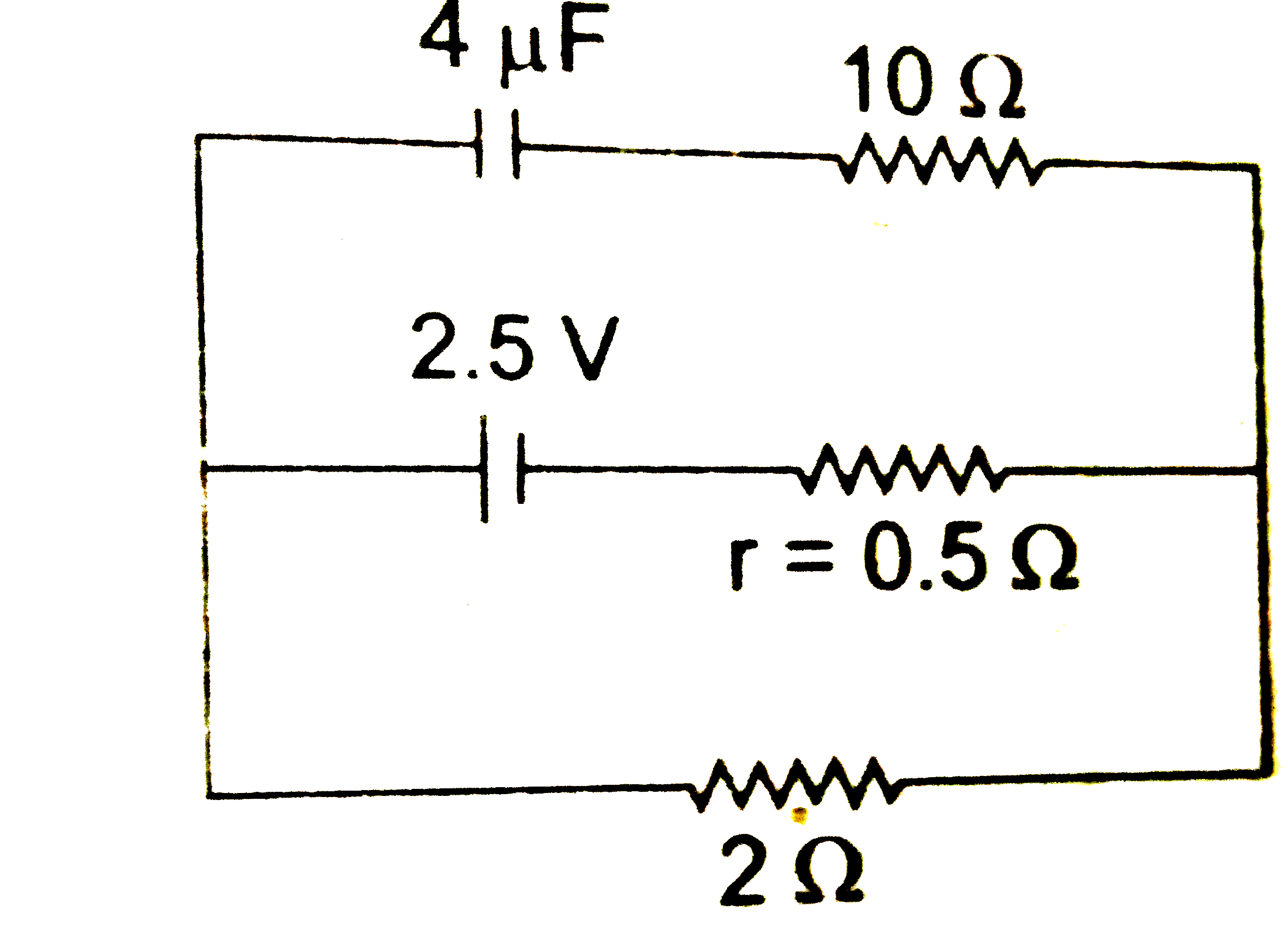Suppose a charge +Q1 is given to the positive plates and a charge −Q2 to the negative plate of a capacitor. What is the "charge on the capacitor"? Solution in Gujrati
Step by step video & image solution for Suppose a charge +Q_1 is given to the positive plates and a charge -Q_2 to the negative plate of a capacitor. What is the "charge on the capacitor"? by Physics experts to help you in doubts & scoring excellent marks in Class 12 exams.
Topper's Solved these Questions
- BOOK - HC VERMACHAPTER - CAPACITORSEXERCISE - Objective 112videos
CAPACITORS
- BOOK - HC VERMACHAPTER - CAPACITORSEXERCISE - Objective 27videos
CAPACITORS
- BOOK - HC VERMACHAPTER - CAPACITORSEXERCISE - Worked Out Examples23videos
CAPACITORS
- BOOK - HC VERMACHAPTER - BOHR'S MODEL AND PHYSICS OF THE ATOMEXERCISE - Exercises46videos
BOHR'S MODEL AND PHYSICS OF THE ATOM
- BOOK - HC VERMACHAPTER - DISPERSION AND SPECTRAEXERCISE - Exercises11videos
DISPERSION AND SPECTRA
Similar Questions
A capacitor of capacitance C is charged to a potential V. The flux of the electric field through a closed surface enclosing the capacitor is
03:24View SolutionThe capacitance of a capacitor does not depend on
04:01View SolutionA parallel plate capacitor has plates of area 200cm2 and separation between the plates 1.00 mm. What potential difference will be developed if a charge of 1.00 nC )(i.e., 1.00×10−9C) is given to the capacitor? If the plate separation is now increased to 2.00 mm, what will be the new potential difference?
02:58View SolutionThe bohrradius is given by a0=ε0h2πme2 verify that the RHS has dimesions of length
03:30View SolutionA flint glass prism and a crown glass prism are to be combined in such a way that the deviation of the mean ray is zero. The refractive index of flint and crown glasses for the mean ray are 1.620 and 1.518 respectively. If the refracting angle of the flint prism is 6.0∘, what would be the refracting angle of the crown prism ?
02:49View SolutionSuppose a charge +Q1 is given to the positive plates and a charge −Q2 to the negative plate of a capacitor. What is the "charge on the capacitor"?
View SolutionIn the given circuit, a charge of +80μC is given to the upper plate of the 4μF capacitor. Then in the steady state, the charge on the upper plate of the 3μF capacitor is
 02:09View Solution
02:09View SolutionCharges Q_1 and Q_2 are given to two plates fo a parllel plate capacitor. The capacity of the capacitor is C . When the switch is closed , mark correct statement (s) . (Assume both Q_1 and Q_2 to be positive).
05:30View Solutionदिये गये परिपथ में संधारित्र की प्लेट पर आवेश है -
 04:31View Solution
04:31View Solutionदिये गए परिपथ में संधारित्र की प्लेटो पर आवेश है:
 03:21View Solution
03:21View SolutionTwo identical metal plates are positively charged to Q_1" and " Q_2(Q_2 lt Q_1) . If they are brough near each other to form a parallel plate capacitor of capacitance C, then what will be the potential differences between the plates?
04:17View Solutionएक सधारित्र की घनात्मक प्लेट पर + Q व् ऋणात्मक प्लेट पर - Q आवेश दिया जाता है | सधारित्र पर कुल आवेश क्या होगा |
03:03View Solutionदो एक जैसी धात्विक प्लेटों को क्रमशः q1 और q2 आवेश (q2<q1) दिया गया है। यदि ये दोनों प्लेटें आपस में पास लाकर एक समान्तर प्लेट संधारित्र की धारिता C है, बनाया जाये, तो इन प्लेटों के मध्य विभवान्तर ज्ञात कीजिए।
02:17View SolutionOne plate of a parallel plate capacitor is given a charge of 2μC. What charge will appear on four surfaces of the capacitor?
05:04View SolutionSuppose a charge +Q1 is given to the positive plates and a charge −Q2 to the negative plate of a capacitor. What is the "charge on the capacitor"?
01:50View SolutionMany of the applications of capacitors depend on their ability to store energy:-In a charged capacitor energy is stored in the: (a)Positively charged plate (b)Negatively charged plate (c)Electric field between the plate (d)None-of these
02:11View Solution
